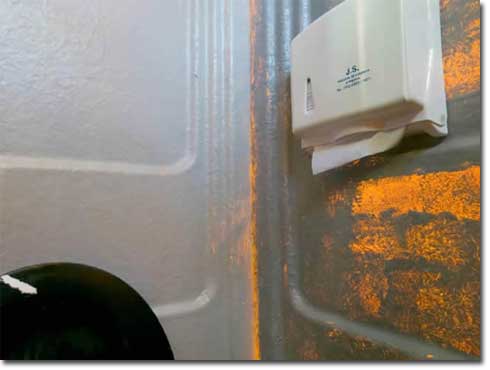Museo de Arte y Diseño Contemporáneo ,
Sep 06, 2006 - Oct 20, 2006
Antigua Fanal, San Jose, Costa Rica
Neither fickle chance nor precise laws
by Tamara Díaz Bringas
If an open convocation could be the ideal place for trying out something risky, the present biennial still demonstrated a timid, cautious nature. Maybe the local artistic scene itself is not very daring, but the foundations of the Biennial are, to a great extent, still rigid. Certain formats, certain dimensions, a fixed duration for the videos represent some of those limitations.
Others have to do with the requirement for all participants to have had at least two individual or three group exhibitions, thus excluding many young artists for whom the biennial would serve precisely as a launchpad onto the exhibition circuit. The non-admittance of collective proposals doesn’t seem to be consistent with the contemporary dynamics of art; neither does the requirement of presenting at least two projects.
Hard Dreams
Nevertheless, this year’s Costa Rican Biennial of Visual Arts presents a fresher and more solid artistic scene than in editions past. The consistency in selection and the marked movement toward the younger generations are noteworthy. This time, the election of the six Costa Rican artists who will participate in the 2006 Central American Biennial recognized some works "of superior inventiveness, critical sense and irony" in Guillermo Vargas (Habacuc), Cinthya Soto, Rafael Saenz, Paulina Velasquez, Jorge Alban and Roberto Guerrero.
A question regarding the fissures between reality and representation links the works of Habacuc and Soto. Of the latter, two large photographic pieces present a mosaic of Costa Rican interiors. The diverse shots of the same scene, the recourse to montage, and the sections lend Soto’s proposal a cinematographic sensibility. However, beyond the excess of these baroque spaces, what is in play is the image’s incapacity to relate what is real.
Police Interfering with a work that dealt with an Abuse of Authority comprises an acute experiment with regard to the link between translation and power. This work by Habacuc highlights the successive interpretations that transform the narrative regarding a supposed abuse of power. In the exchanges between the political and artistic arenas, both the art and judicial institutions remain under suspicion.
The preoccupation with the media and interpretations – be they press-related or political discourse – animates the works of Jorge Alban that touch on problematic themes in the present Costa Rican context. In a certain sense, it deals with works exemplifying the critical use of a medium, in the same way that interactive video places the spectator in the situation of an (illusory) idea of participation.
Lucia Mendez exhibits a frank and precise installation made of rice, beans and corn, under the title (and threat) of Copyright. A critical and timely piece, most of all in moments of intense national debate over the approval of a polemic Free Trade Agreement between the United States and Central America. At the same time, at the critical cutting edge of the Biennial are works such as Roberto Guerrero’s, which manages to assuage by way of humor and parody, certain supposedly strong notions such as "masculinity", "sport", and "nation".
Few performances took place in the public area. Two of those, however, justified the absence of others: Libérame (Free Me), by Yamil de la Paz, set discreet clusters of helium-filled balloons around the city that the people had to let loose; and Alejandro Ramirez’s performance heaped concrete pillows in different parts of San José, inverting the rhetoric of softness for the crudity of some Hard Dreams.
Things Change and Technology Does Too / A Documented Melodrama
Statistics on participation in the event yielded the following details: of 82 men, 18 were selected; of 31 women, 13 remained in the show. These data may also be read thus: 42% of female participants were selected versus 22% of the males. Things change.
And technology does too. As shown by Victoria Cabezas’ work, which lends its title to this epigraph: A Marriage Certificate on Legal Bond, Side by Side with a Solitary E-mail Asking for a Divorce. Simply put.
|













